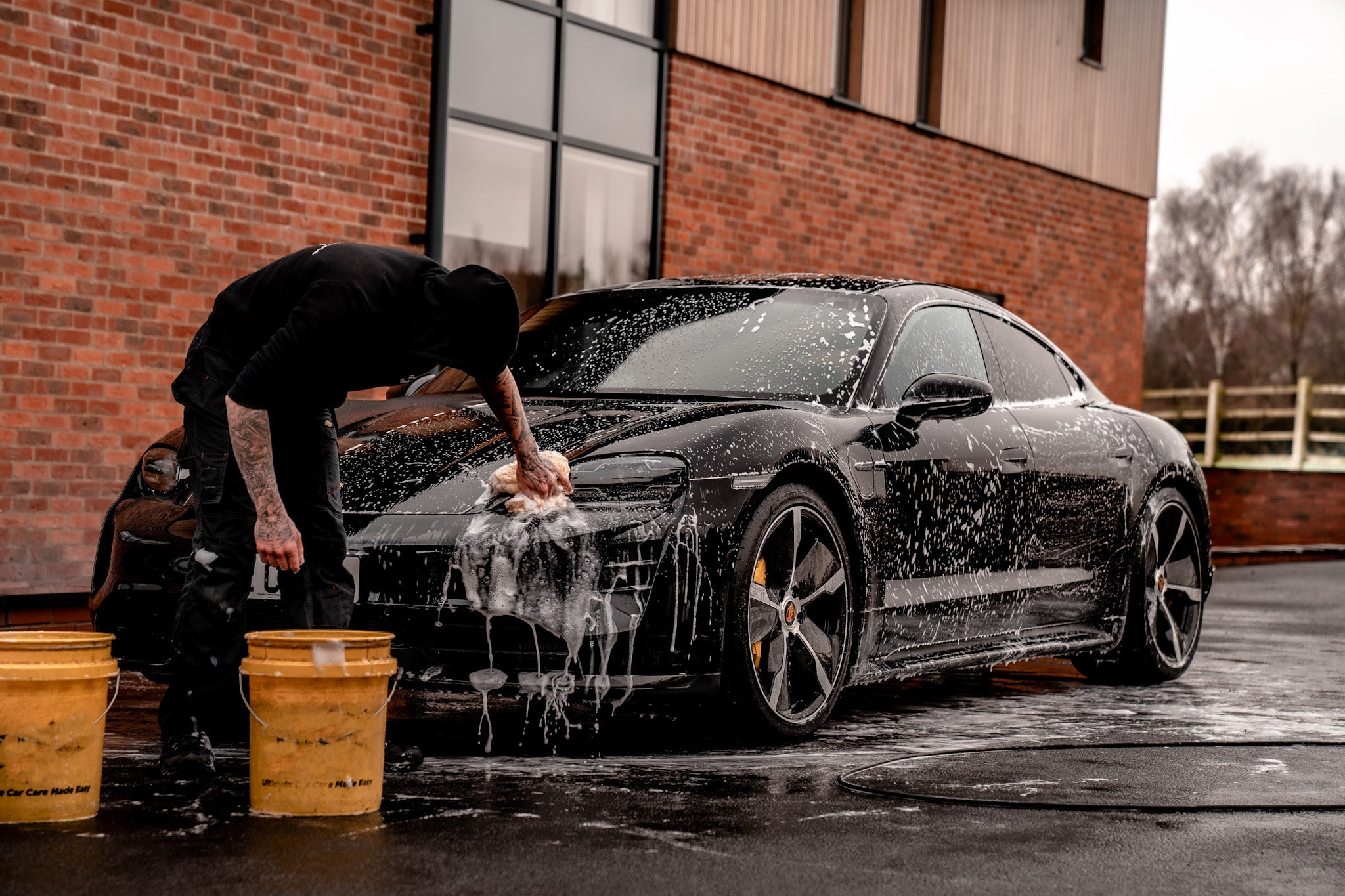A Comprehensive Overview to the Kinds Of Ceramic Finish on the marketplace
Ceramic layers have emerged as a pivotal option throughout different industries due to their distinct homes and applications. As we explore the unique qualities and applications of these layers, the ramifications for efficiency and durability become significantly apparent, increasing concerns concerning which type may finest match your requirements.
Recognizing Ceramic Coatings
Ceramic layers are sophisticated safety services that have acquired appeal in different sectors, especially in vehicle and aerospace applications. These layers contain a liquid polymer that, when treated, creates a resilient, hydrophobic layer externally of the substrate. This layer offers enhanced resistance to environmental impurities, UV radiation, and chemical direct exposure, thus extending the life and aesthetic appeal of the underlying material.
The essential element of ceramic finishings is silica, which contributes to their solidity and longevity. The application procedure typically includes surface area prep work, application of the coating, and healing, which can be attained with warmth or UV light. As soon as treated, ceramic finishings display remarkable bonding homes, enabling them to adhere highly to a selection of surface areas, including steels, plastics, and glass.
In enhancement to their safety functions, ceramic coatings likewise supply simplicity of upkeep. Their hydrophobic nature lowers the adherence of dust and crud, making cleansing less complex and less constant. Overall, the fostering of ceramic coatings stands for a considerable development in surface protection technology, supplying both functional and visual benefits across several fields.
Sorts Of Ceramic Coatings
Numerous kinds of ceramic coverings are available, each developed to fulfill specific efficiency needs and applications - Paint Protection Film. The most usual types include:
Silica-based Coatings: These finishings mainly are composed of silicon dioxide and are recognized for their longevity and chemical resistance. They are commonly used in auto and industrial applications.
Titanium Dioxide Coatings: Prominent for their photocatalytic residential or commercial properties, titanium dioxide finishes are often applied in environments where self-cleaning and antifungal residential or commercial properties are desirable, such as in structure products and vehicle surfaces.
Zirconia Coatings: Characterized by their high-temperature stability and thermal resistance, zirconia coverings are utilized in applications such as generator engines and high-performance auto elements.
Alumina Coatings: Displaying outstanding firmness and thermal stability, alumina coverings are frequently used in wear-resistant applications, including reducing tools and industrial machinery. - Auto Detailing
Crossbreed Coatings: Incorporating the residential or commercial properties of various products, crossbreed finishes offer boosted performance qualities, making them ideal for unique and demanding applications.
Each type of ceramic covering serves distinctive functions, allowing customers to choose the most appropriate service based upon particular ecological conditions and efficiency requirements.
Benefits of Ceramic Coatings
Coatings play a critical function in boosting the performance and durability of surface areas across various markets. Ceramic layers, particularly, deal numerous advantages that make them significantly popular amongst makers and consumers alike. Among the key benefits is their outstanding resilience. These coverings are immune to scrapes, chemicals, and UV rays, guaranteeing that the underlying surface area stays secured over time.
In addition to toughness, ceramic coatings give excellent hydrophobic homes, enabling simple cleansing and upkeep. This water-repellent nature lessens the adherence of dust, gunk, and various visit the website other pollutants, which can extend the visual charm and performance of the surface area. In addition, ceramic coatings can substantially improve thermal resistance, making them ideal for applications that withstand heats.

Application Process
When applying ceramic finishings, a thorough strategy is essential to achieve ideal results. The application procedure commonly begins with thorough surface area preparation. This includes cleaning, decontaminating, and polishing the surface area to remove all contaminations, including dust, grease, and prior waxes or sealants. A tidy surface makes sure proper bond of the covering.
As soon as the surface is prepped, the following action pop over to these guys is to apply the ceramic coating. This can be done using an applicator pad or a microfiber towel, making certain also protection. It is crucial to operate in little sections to keep control and avoid early healing. The coating ought to be used in slim layers, as thicker applications can bring about uneven surfaces.
After application, the covering requires a details healing time, normally ranging from a few hours to a complete day, depending on the item. Complying with these steps vigilantly will take full advantage of the effectiveness and longevity of the ceramic coating, providing a durable protective layer for the surface area.
Maintenance and Longevity
To guarantee the durability and effectiveness of a ceramic finish, normal maintenance is crucial. Ceramic coverings, recognized for their Full Report sturdiness and protective top qualities, require certain care routines to maximize their life-span and performance.
Along with regular cleaning, periodic assessments are crucial. Try to find indications of wear or damages, such as hydrophobic properties diminishing or surface flaws. If needed, a light polish may be related to invigorate the layer without stripping it away.
Additionally, the application of a booster spray can improve the coating's hydrophobic effects and restore its gloss. This is especially helpful for coatings that have been in use for a prolonged duration. Inevitably, by sticking to these upkeep techniques, one can substantially prolong the life of a ceramic finish, making certain that it remains to supply optimal security versus ecological variables and keep the visual charm of the car.
Conclusion
